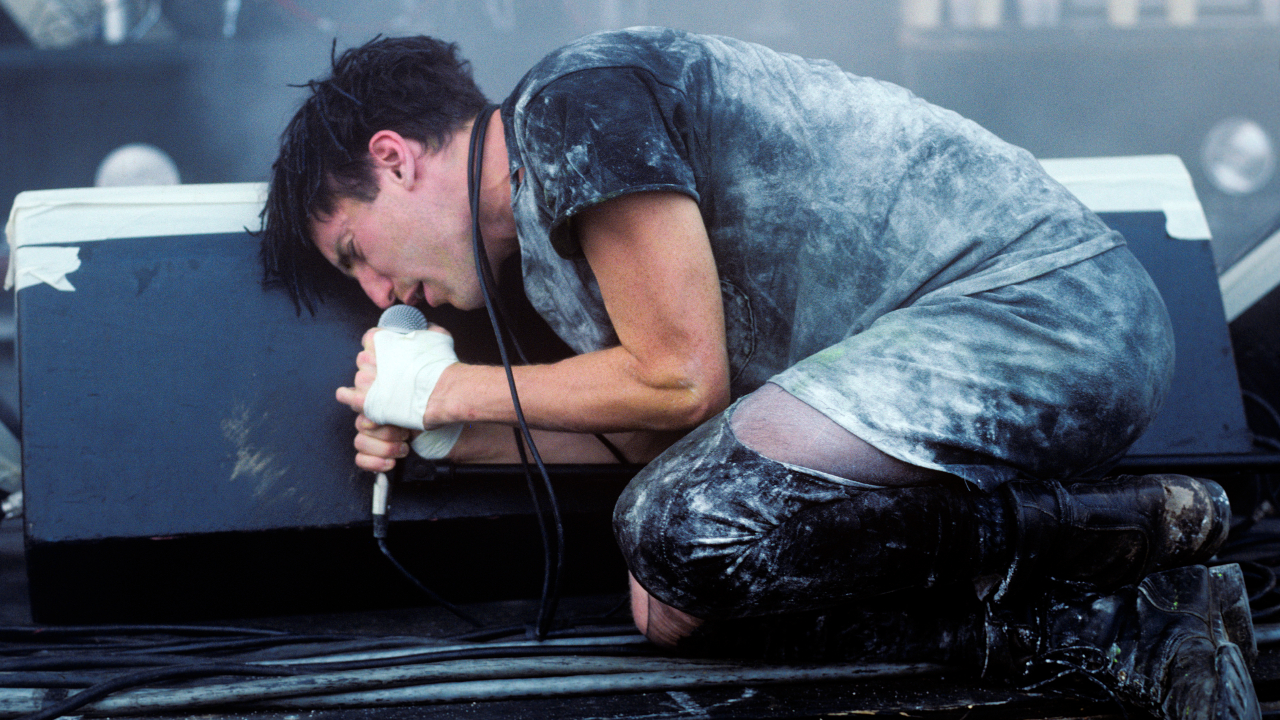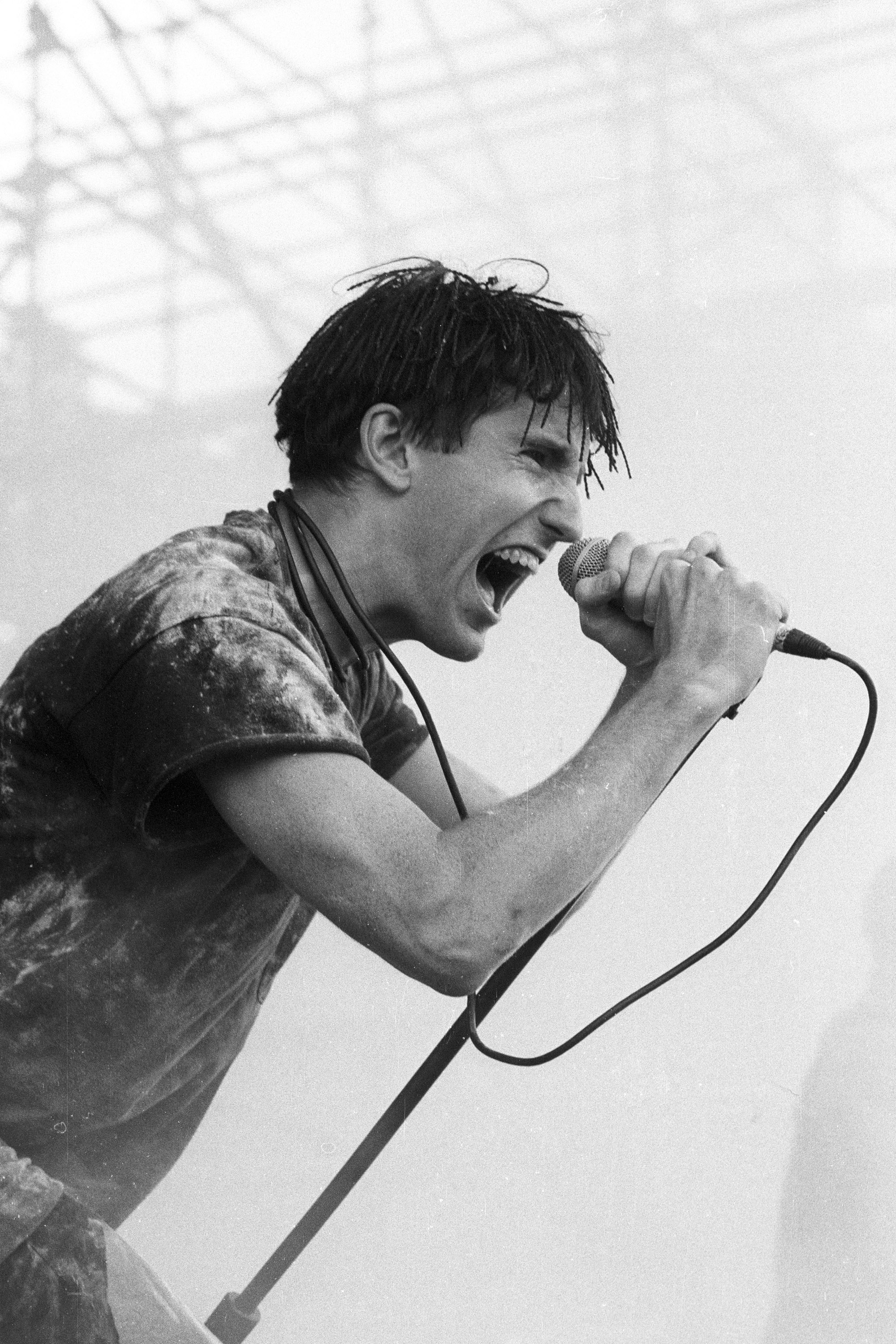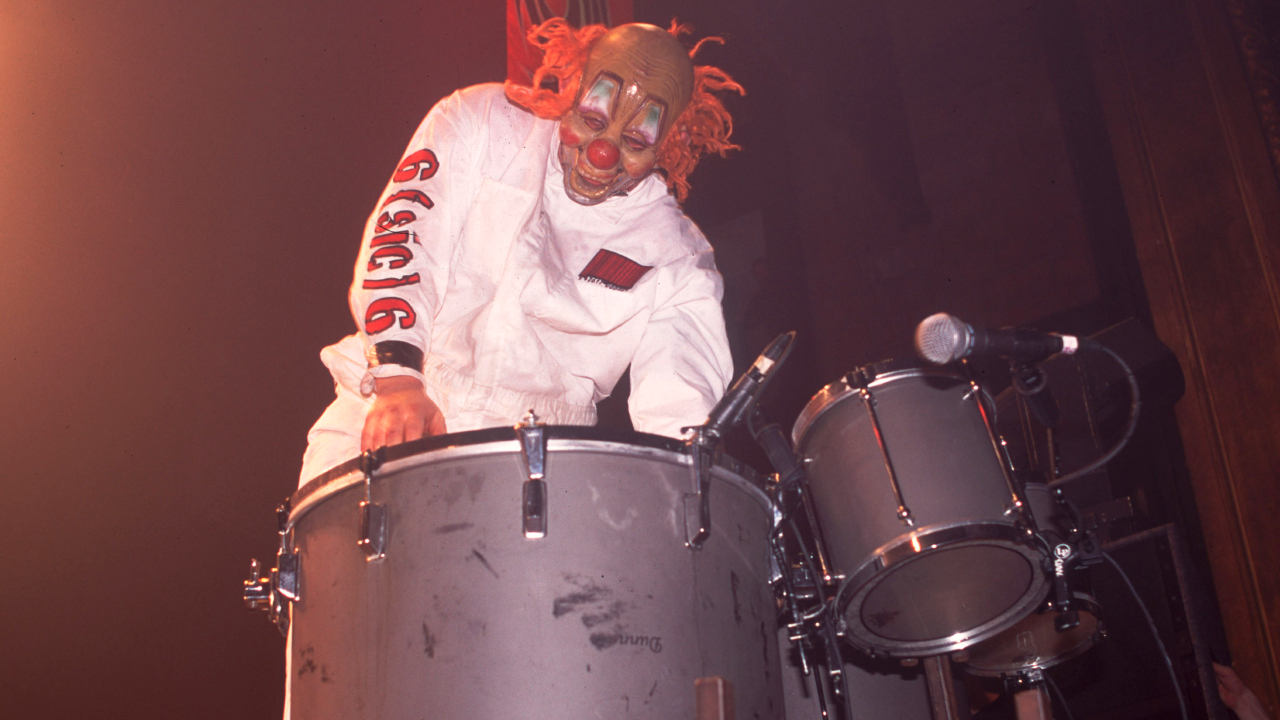"What would Van Gogh be worth if he had other artists dabbing their paint brushes on his canvas?" How Trent Reznor wrote Nine Inch Nails' first big hit - and why it annoyed the hell out of him
This dancefloor anthem turned Nine Inch Nails into household names in the 90s

Trent Reznor was working as an assistant engineer, janitor and all-round dogsbody at Right Track Studios in Cleveland, Ohio when he wrote and recorded the song that would put Nine Inch Nails on the map.
That track, Head Like A Hole, would hit the sweet spot between the confrontational industrial noise of Ministry and Depeche Mode’s stadium-sized electronic pop, turning the man who wrote it into the dark prince of early 90s alt-rock.
Trent had put in time as a keyboard player in local synth-pop groups The Innocent, Exotic Birds and Slam Bamboo, but he longed to create something more personal and reflective of his current mindset. He asked his boss, studio owner Bart Koster, if he could use the downtime between other bands’ sessions to work on his own material. Bart, spotting his employee’s potential, agreed.
“I reached the point in my life where I either needed to do this or do something else,” Trent told Scene Magazine of the birth of what would become Nine Inch Nails.
“I wanted to be a musician. I had an idea of what I wanted to do with my life, but I had not put the work into it to get to that stage. For me, the whole project was an experiment to see what would happen if I focused all my energy into one thing: put my life out of balance and just work on it. That involved starting to write songs. I think I’d always been kind of afraid because if they were terrible, I didn’t know what I was going to do with myself.”

For all his determination to make his own music, exactly what shape it would take was still a little fuzzy when he began recording demos in 1988. “I didn’t have a focused idea of what the project was going to be,” he later admitted. “It was basically me with the computer, coming up with different ideas, bits of songs. After a couple were written I realised the strength of this material was its emotional intensity. It was emotion-based, rather than technique-based.”
Initially, he didn’t think these aggressive electronic songs he was writing would ever be played live. That changed when he got a chance to open up for industrial linchpins Skinny Puppy on their US tour, assembling a band specifically for the shows. By that point, he’d already amassed several of the songs that would appear on NIN’s debut album, Pretty Hate Machine, although Head Like A Hole wasn’t among them.
Sign up below to get the latest from Metal Hammer, plus exclusive special offers, direct to your inbox!
“It was a somewhat bad experience,” he later said of the tour. “In a lot of ways I was restricted because of the arrangement. So I got rid of the band I had and wrote some new songs.”
One of these new tracks was Head Like A Hole. Ironically, for a song that would prove to be so pivotal, it was almost an afterthought, spat out with uncharacteristic speed.
“I wrote it at the last minute as a throwaway,” he said in 2005. “The rest of Pretty Hate Machine was already written, and we’d revised everything else about nine times. Up until then songwriting had been a meticulous and agonising process, but this took me 15 minutes in my bedroom.”
That urgency fed into the song, with a whirring electronic pulse giving a sense of relentless forward motion, only interrupted by an explosive chorus. As with all the other songs that would end up on Pretty Hate Machine, Trent played everything on Head Like A Hole. Just like his idol Prince, he was reluctant to let anyone else possibly dilute his vision.
“There really isn’t room for collaboration when you’re trying to express very personal feelings and internal angst,” he told Propaganda magazine in 1990. “Collaboration leads to compromise, which can only water down the impact. What would a Van Gogh be worth, artistically, if he had other artists dabbing their paint brushes on his canvas?”
Despite that, he admitted that he didn’t always believe in his own abilities as a songwriter and a musician. “I’d spend time at night learning how to record and engineer things and I tried to work out how my voice sounded,” he said. “I was playing everything myself, but I had no confidence in playing guitar. I was convinced that if any real players heard it, they’d laugh. Now I know that’s bullshit, but at the time I was very insecure.”
Lyrically, Head Like A Hole was an all-purpose blast of rage and cynicism directed at the overriding power of money in modern society and the people whose lives are ruled by it. ‘Bow down before the one you serve,’ sneered the singer. ‘You’re going to get what you deserve.’
“I don’t remember what I was thinking about at the time,” he later said of the song’s subject matter, “but it was pretty much about yelling at a beast without putting a face to it.”
Writing the songs for Pretty Hate Machine turned out to be slightly less arduous than actually making it. Trent’s first choice of producer was Mark ‘Flood’ Ellis, the British studio wizard who had worked with New Order, Ministry and British synth-pop duo Erasure. But Flood was still finishing up Depeche Mode’s Violator album when NIN entered the studio to begin work on their debut.
“Flood was originally going to do the whole album, but his schedule didn’t permit it,” Trent recalled. “So I ended up in four different studios with four different guys mixing it. I spent a lot of time editing, picking parts of different mixes and splicing them together to give the impression of continuity.”
By the time Flood was eventually free to hook up with the band, Head Like A Hole was one of only two songs left for him to produce. Where other tracks on the album leaned into the frontman’s synth-pop background, albeit in much darker, bleaker fashion, Head Like A Hole was a burst of nihilistic energy that had more in common with metal than the Pet Shop Boys.
Pretty Hate Machine was released in October 1989 on US independent label TVT, with Head Like A Hole as its opening track. The label were unhappy that the finished product was way darker and more aggressive than the early demos they’d heard. According to Trent Reznor, TVT boss Steve Gottlieb called the album “an abortion”, adding: “You fucked up what could have been a good career” (something Steve has since denied). In turn, Trent accused TVT of trying to bury the album.
Despite the tensions, Head Like A Hole was released as a single on March 22, 1990 (the 11-track US maxi-single version featured four different remixes of the song, with a longer running time than its parent album). It was accompanied by a striking video that juxtaposed a barrage of stroboscopic images with live footage of a mini-dreadlocked Trent leading NIN through an intense performance of the song – too intense at times.
“I had just bought my new little amp,” NIN live guitarist Richard Patrick later said of the video shoot, “and Trent was trying to knock it over. You can see me holding it up with my butt, trying to hold it up, and Trent was pissed. He was like, ‘Dude, let it fall over!’ I’m like, ‘But I just bought this thing. I just spent $600 on this, man.’ He said, ‘We’re making a fuckin’ video, Rich.’ I’m like, ‘I know, but I had to ask my mom for 600 bucks. I don’t have 600 bucks.’”
This weird electronic-rock hybrid by an unknown band from Cleveland, Ohio picked up a surprising amount of radio and MTV play in the US, while press support in the UK helped it eventually breach the Top 50.
Nine Inch Nails also found an unlikely cheerleader in Axl Rose, who invited the band to open for Guns N’ Roses on their 1991 European stadium tour. But it was their appearance on that year’s inaugural Lollapalooza tour that helped place NIN front and centre in the alternative rock boom.
Pretty Hate Machine would go on to sell three million copies in the US alone, setting up Trent Reznor as a reluctant figurehead for a generation of angsty, awkward kids. Head Like A Hole itself became a landmark song for Nine Inch Nails and the industrial genre.
It’s been covered by everyone from Korn and AFI to Miley Cyrus, who performed her tongue-in-cheek version, renamed On A Roll, in an episode of the Netflix series Black Mirror.
And what does the ex-studio janitor who wrote the song think about it? “The fact that it produced this huge reaction really pissed me off,” he later grumbled, “because I hadn’t agonised over it.” There’s just no pleasing some people.

Stephen joined the Louder team as a co-host of the Metal Hammer Podcast in late 2011, eventually becoming a regular contributor to the magazine. He has since written hundreds of articles for Metal Hammer, Classic Rock and Louder, specialising in punk, hardcore and 90s metal. He also presents the Trve. Cvlt. Pop! podcast with Gaz Jones and makes regular appearances on the Bangers And Most podcast.
You must confirm your public display name before commenting
Please logout and then login again, you will then be prompted to enter your display name.


